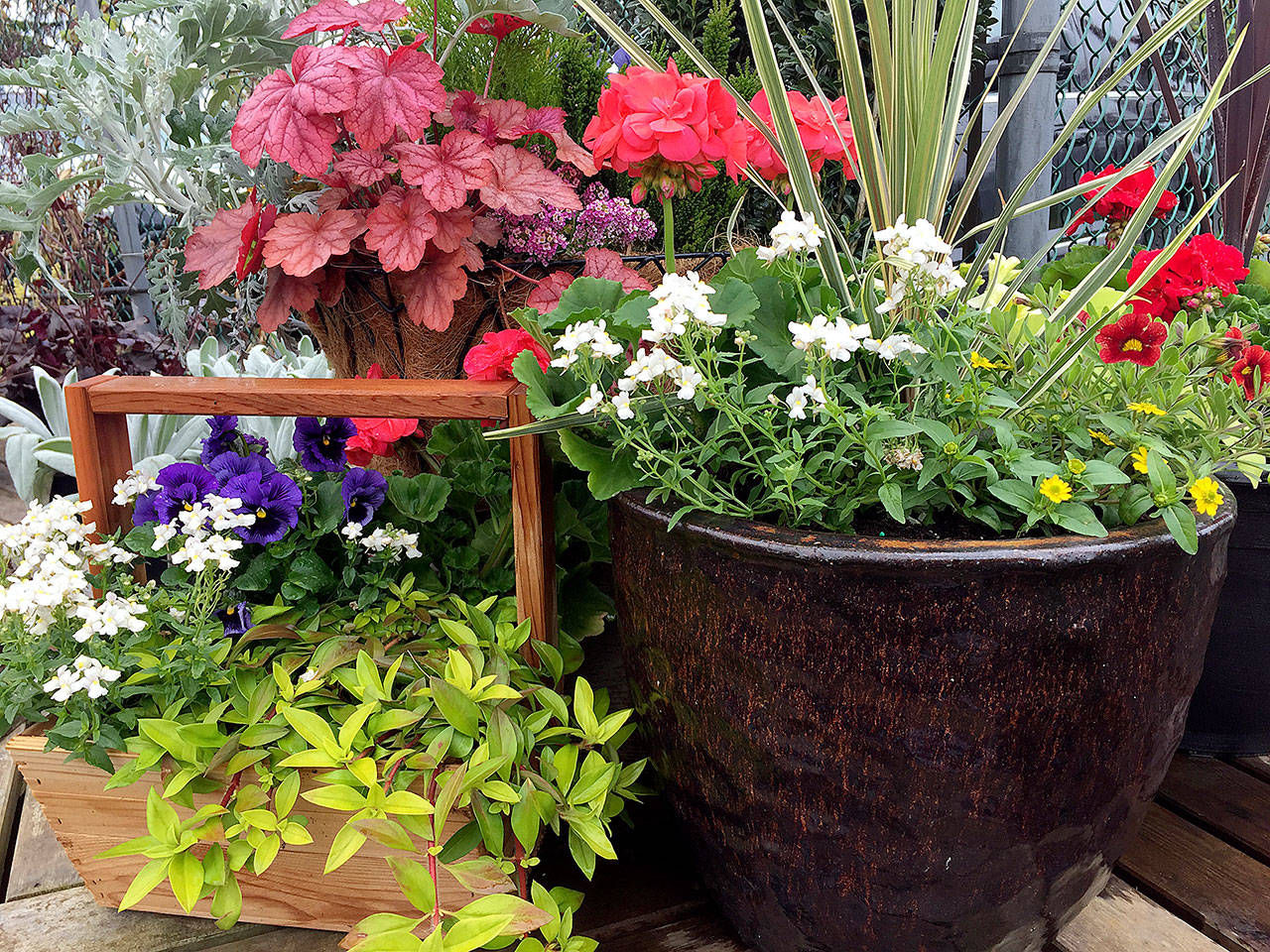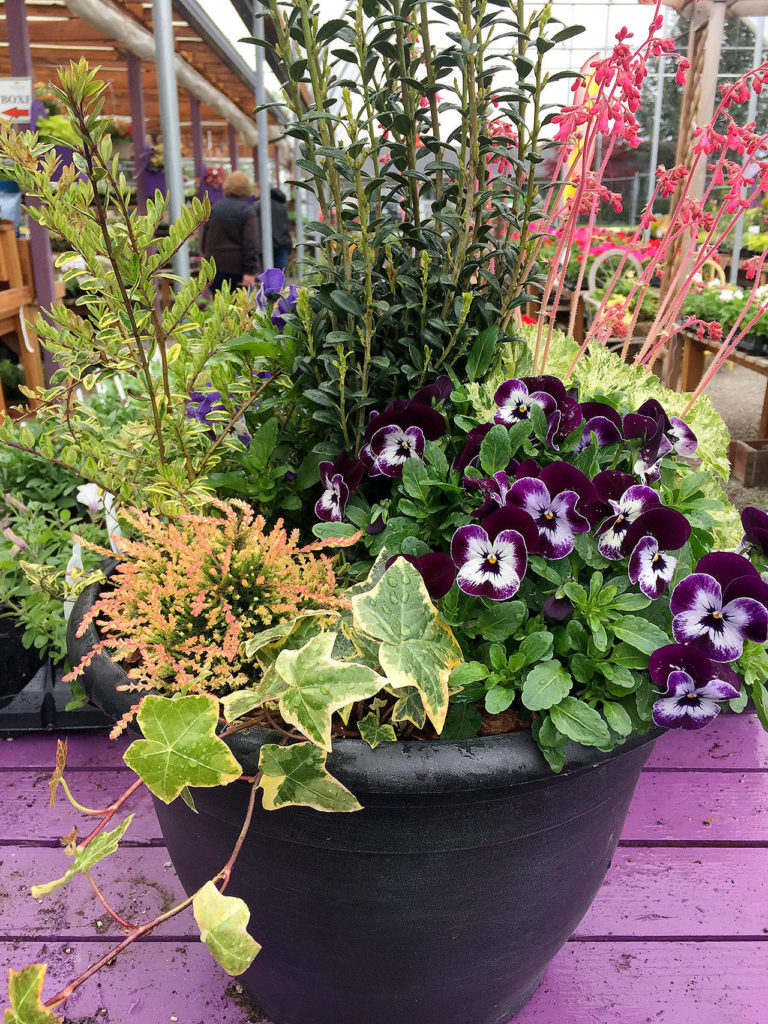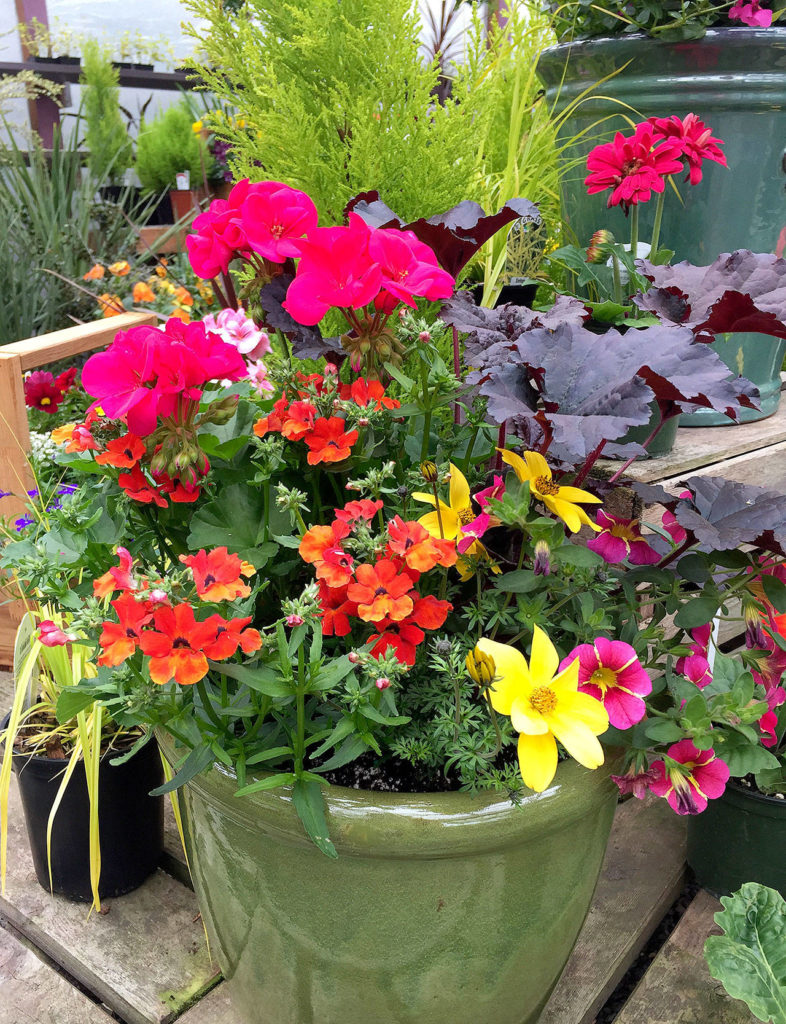It’s time to move out of our comfort zone and get into container gardening in a whole new way.
Gone are the days when we only put flowers in our pots. Gone are the days when everything had to be perfectly symmetrical, and gone are the days when all the colors had to follow the dictates of a color wheel.
In the past we tended to focus on colorful flowers, now we are waking up to the attributes of colorful foliage. Containers of today are as much textural as they are floral. While gardeners still like to add a little bit of color for some pop and sizzle, it is the foliage that provides the structure and stability to the arrangement.
While putting a spiky plant in the center, some mounding plants on the sides and some trailing ones on the edges will give you an attractive and balanced arrangement, creating asymmetrical arrangements can be just as enjoyable and project more drama and excitement than symmetrical ones.
Sources of plant material for our containers no longer come from just the annual department of the garden center. Shrubs, trees, ground covers, perennials, roses, bulbs, vegetables, herbs, tropicals, house plants, pond plants and grasses are all fair game for containers.
The absolute only rule is that whatever plants you put into the container must require the same growing conditions to succeed.
Don’t feel like you have to cram a million different plants into one pot to make it interesting. A collection of similar pots with just one type of plant in each one and arranged in a cluster can look even more dramatic than a single pot with all the same plants in it.
The individual plants can revolve around a similar theme, such as succulent foliage or a collection of hostas or ornamental grasses, or they can be more contrasting by using opposite colors, such as purples and yellows, or blues and oranges. Whether all in one pot or expanded into separate pots, the effect is the same.
I think the biggest mistake that gardeners make with their containers is to not use good-quality potting soil and not feed enough. It doesn’t matter if you are growing veggies or flowers.
A commercial potting soil like E.B. Stone Organics’ Ultimate Recipe may seem expensive, but it is chockablock with goodies that will make your plants go nuts. If you use a soluble feed like Miracle-Gro, then you should be feeding two to three times a week in the height of the season. Anything less will be disappointing.
For even better results, I recommend Grow-More “Sea Grow,” which is like Miracle-Gro, only it has seaweed extract that gives it an extra punch. (Seaweed extract has extra micro-nutrients that bring a unique synergism to the garden, promoting vigorous growth and abundant blooms.)
Remember container gardens are temporary plantings that need some occasional adjustments — a little trimming here, a little poking there, and a replacement or two now and then. Just like when you empty a vase of cut flowers, container gardens also need to be dumped and replaced with new plants from time to time.
With all the wonderful plants we have to choose from here in the Northwest, there is no excuse for not having a colorful and interesting container spring, summer, winter or fall. Just remember that good soil and consistent feeding will make all the difference in the world.
Want to learn more? Join Sunnyside Nursery for “How To Build A Container Garden,” a free class scheduled for 10 a.m. May 20 at 3915 Sunnyside Blvd., Marysville.
The garden center on May 20 will also be hosting a Free Container Planting Day from 10 a.m. to 4 p.m. in partnership with the Arlington Garden Club. Bring your containers, pick out your favorite plants to purchase. Club members will plant your containers with E.B. Stone Organic soil for free. All the fun for you without any of the mess.
Steve Smith is owner of Sunnyside Nursery in Marysville and can be reached at info@sunnysidenursery.net.
Talk to us
> Give us your news tips.
> Send us a letter to the editor.
> More Herald contact information.



























